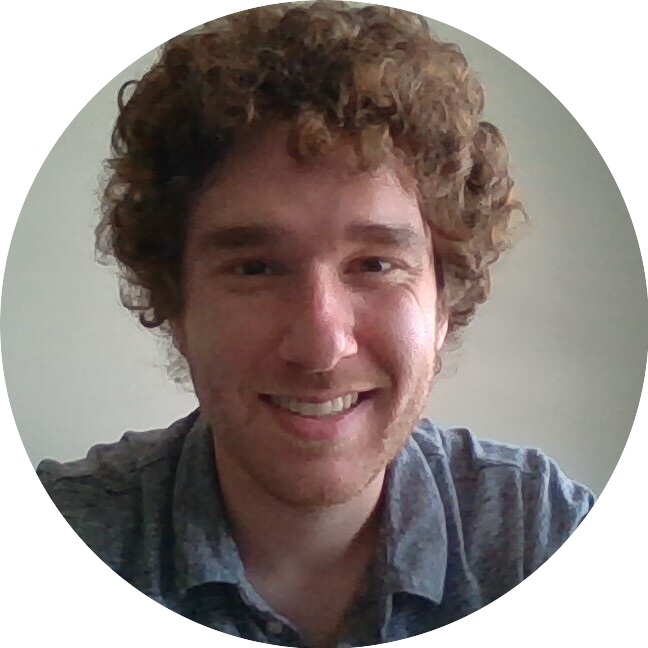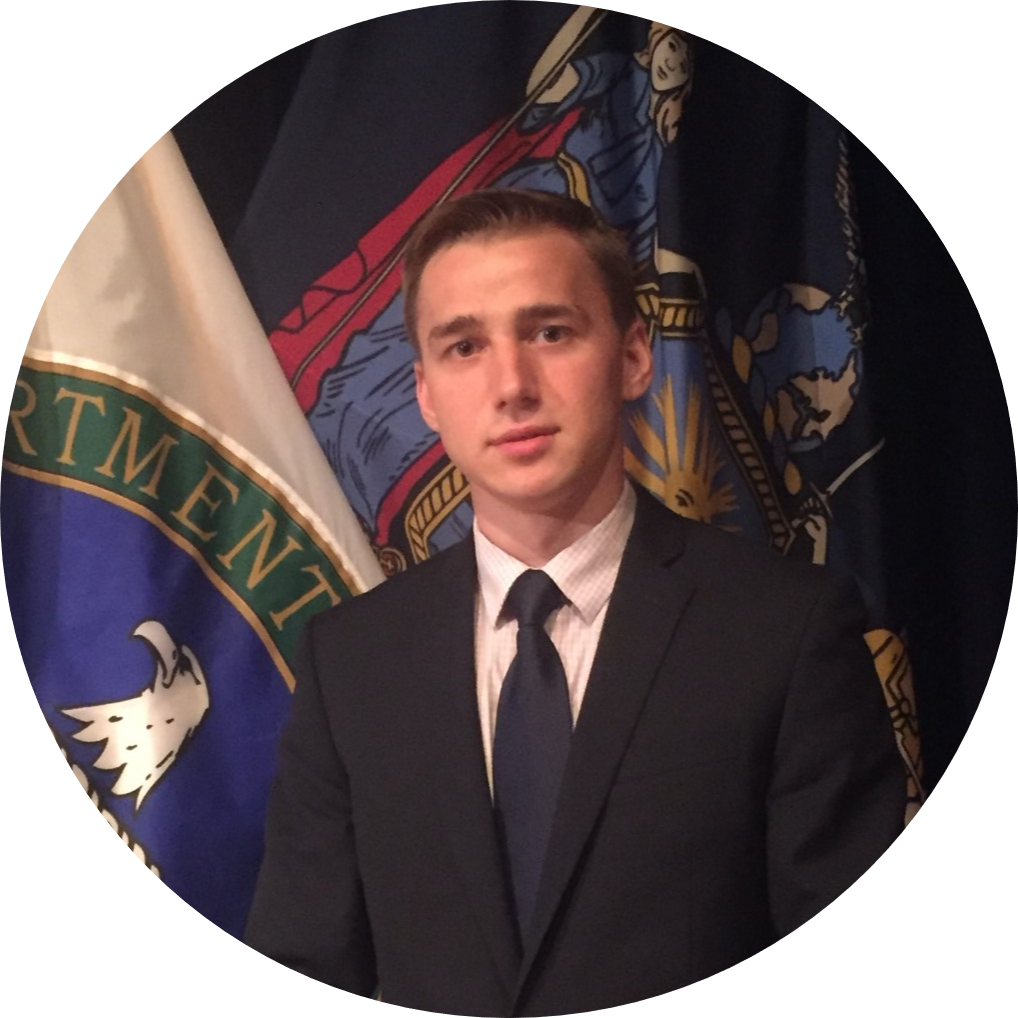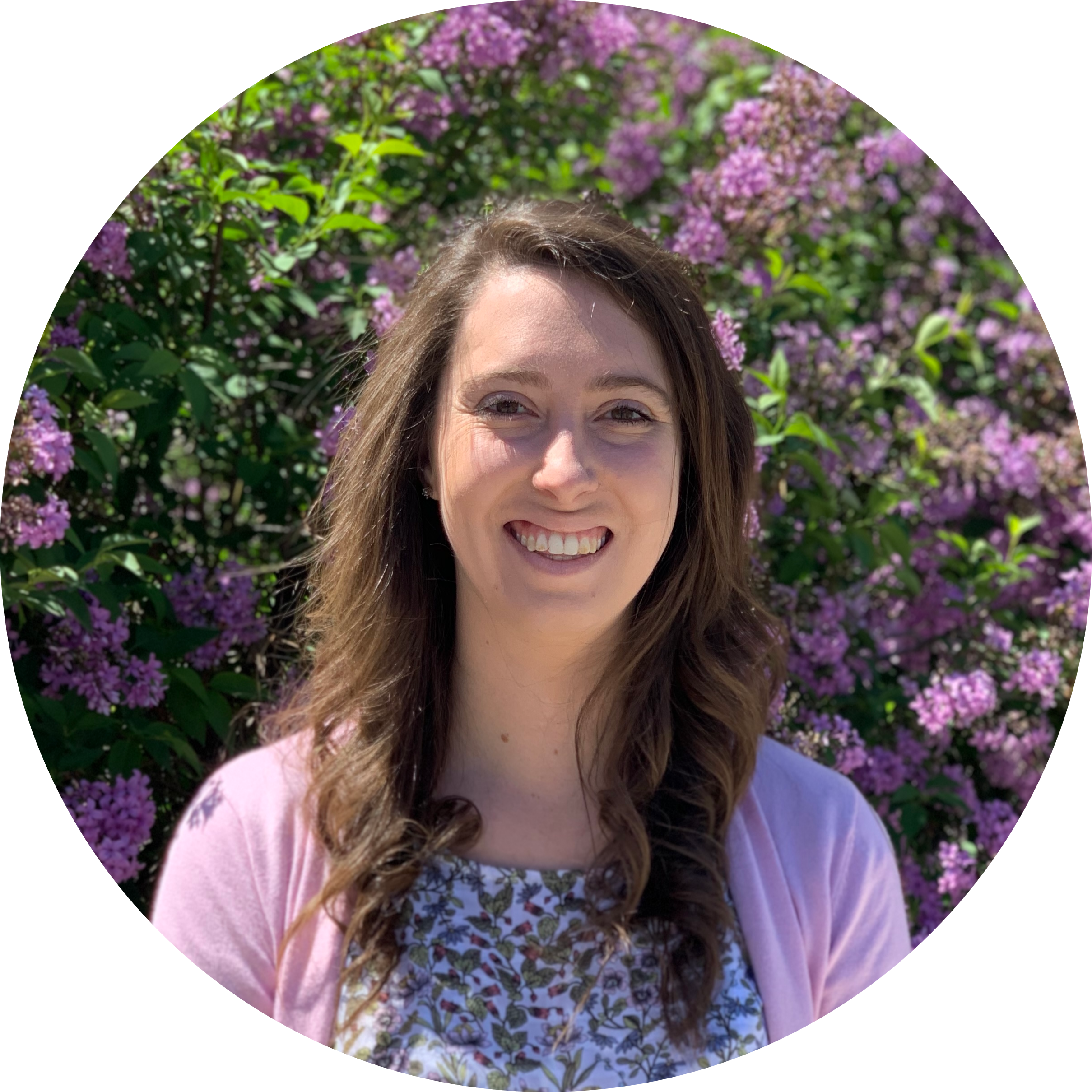Group Members
Principal Investigator
Greg Severin
Staff
Morgan Kalman
Isotope Harvesting Technician I
B.S. Chemistry, Michigan State University
Experience: Morgan began working with the isotope harvesting group as an undergraduate, where
they first started working on engineering water systems for isotope harvesting
Current projects: Morgan builds and upgrades the water systems that are used in the isotope harvesting
experiments, along with supporting graduate students in their endeavors, buying materials,
maintaining equipment, and coordinating safety procedures for the group
Motivation for this work: The autonomy of this position affords Morgan to flex creatively rather than just
conform to normalcy
Hobbies: Morgan enjoys painting miniatures, reading, and tabletop gaming
.png)
Chirag K. Vyas
Project Scientist
Chemistry Building, Room 588
Ph.D. Energy Science, Sungkyunkwan University
Thesis: Novel Separation Schemes of Actinides and Fission Products using Selective
Extractants
B.Sc. Chemistry, Savitribai Phule Pune University
Experience: Dr. Chirag Vyas is an intrinsically motivated nuclear and radiochemist with over six
years of extensive experience in both experimental and operational aspects of radiochemical
sciences, including at the international level.
He earned his Ph.D. in Energy Science from the Department of Energy Science, Sungkyunkwan
University under the prestigious World Class University program of the National Research
Foundation, Republic of Korea (South) in 2014. Chirag's academic achievements allowed
him to opt for three months of fully-funded international research internships for
four years in a row, which provided him with distinguished experience to research
in world-renowned laboratories, including CERN in Geneva, Switzerland. After finishing
his Ph.D. in August 2014, Chirag joined the Chemistry Department as a postdoctoral
researcher at Sungkyunkwan University, where he worked on the interdisciplinary area
of graphene oxide and graphene oxide composite application in remediating 137Cs, 90Sr, 241Am, and 99Tc contaminated sea and groundwater. Following this, he was appointed as a postdoctoral
researcher at Korea Atomic Energy Research Institute, where he played a major role
in the initiation and coordination of the production of emerging radiometals 89Zr, 68Ge, 44/47Sc, and 64/67Cu while developing and optimizing the needed standard operating procedures (SOPs)
for target design, radionuclide production, radiochemical separations, quality assurance
and quality control, and process automation. He joined the Isotope Harvesting Group
in Spring 2019 as a research associate and is currently a project scientist for the
Isotope Harvesting Project's upcoming radiochemistry lab at FRIB.
Chirag is the author/co-author of almost 60 technical publications, including 22 scientific
publications in noted journals, and oral and poster presentations at several national
and international conferences. He has given over 25 invited talks related to his work
and nuclear science at universities, schools, and science popularization activities.
Apart from this, he has participated as a resource and scientific expert for IAEA
trainings in the past and is actively involved in several synergistic activities;
namely, journal referee and organizing and coordinating webinars, symposiums, and
trainings
Research interests: Chirag's research interests span radiochemical separations relevant for radionuclide
production and applications, radionuclide generator systems, fluidic system-based
automation for radiochemistry applications, back end of the nuclear fuel cycle, environmental
radiochemistry, and nuclear waste management
Current projects: In his capacity as a Project Scientist, Chirag is determined to provide scientific,
administrative, and technical know-how support for identifying and installing state
of the art safety, research, and quality assurance related capabilities ensuring the
strong potentials needed for prudent, holistic, and sustainable operation of the upcoming
radiochemistry laboratory for the Isotope Harvesting Project. In addition to his commitment
as a project scientist, Chirag is actively involved in researching and mentoring students
in the group towards the radiochemical separations of valuable radionuclides that
accumulate in the NSCL/FRIB beam stops, dumps, slits, cooling water, and off-gas systems
Motivation for this work: Chirag’s childhood aspiration of researching in the area of nuclear and radiochemistry
while supporting peaceful applications of the nuclear sciences for the betterment
of humankind motivates him to do the science he is doing today
Qualities valued: Chirag values and believes in dedication, curiosity, passion, kindness, team spirit,
and following best practices
Hobbies: Outside the lab, you would be most likely to find Chirag in the library, at a social
gathering, traveling to explore, listening to Indian classical music, performing in
the theater, or cooking for his beloved

Wes Walker
Isotope Harvesting Technician I
B.S. Mathematics, Michigan State University
Experience: Wes has been developing software for fifteen years an performing system administration
for twelve. He has also previously provided technical support for small, local companies
Research interests: Wes is interested in computer science
Current projects: Wes is currently working on data collection, extraction, and analysis
Motivation for this work: Providing the support that he does feels impactful. Wes loves the challenges that
working with researchers poses; every day is something new and he is constantly learning
Qualities valued: Efficiency is important to Wes. It's hard to say if this is a consequence of programming
for so long, or if that quality drove him to choose this profession
Hobbies: In his free time, Wes builds small amplifiers and effects for guitar and bass guitar.
Recently, he has picked up disc golf, so when it's nice out he tries to sneak in a
round
Postdoctoral Researchers
.png)
Katharina Domnanich
Postdoctoral student
Chemistry Building, Room 509
Ph.D. Chemistry, University of Bern
M.Sc. Chemistry, University of Vienna
B.Sc. Medicinal Chemistry and Pharmaceutical Sciences, Dublin Institute of Technology
Experience: During an internship at the Paul Sherrer Institute, Katharina dated a Swiss lake sediment
by using anthropogenic radionuclides. For her graduate research at the University
of Vienna, Katharina investigated the CYP1A1 induction by Alternaria toxins in different
cell lines using quantitative PCR and Western Blot Analysis
Research interests: Katharina is interested in the production of radionuclides for medical and diverse
scientific applications, radiolysis in water-based matrices, and radiopharmacy
Current projects: Katharina is currently investigating the generation of radiolytic molecular products
in a flowing-water target and participating in mentoring graduate students
Motivation for this work: Katharina enjoys collaborating with students and providing guidance in research projects.
Doing research as a team is much more fun and also awakens the full creative potential
of each individual
Qualities valued: Katharina values honesty and the courage to do something new
Hobbies: Katharina likes spending time outside and enjoying nature, going for walks, kayaking
and skiing
Ph.D Students
.png)
Jose Blanco
2nd year graduate student
B.S. Chemistry, The University of Alabama at Birmingham
Experience: Jose previously worked at the Lapi Lab at UAB and assisted with producing and separating
43Sc, 44Sc, and 47Sc from Ti, as well as producing [89Zr]ZrCl4 for radiolabeling and tumor studies in rats with AR42J cells, and phantom
studies
Research interests: Jose is interested in the production and separation of radionuclides to be used in
medical applications and expanding current radiochemistry knowledge for applications
in various imaging modalities
Current projects: Jose is currently developing reconstruction techniques for GRETINA for multiphoton
tomography
Motivation for this work: There is a limitless potential in this field from conception of an idea, execution
in an experiment, and the impact it can have on society. The only limitation is the
unwillingness to face challenges, which has yet to stop Jose from going forward
Qualities valued: Jose values grit and determination above all else
Hobbies: Jose enjoys baking and cooking

Vlad Bodnar
2nd year graduate student
B.S. Chemistry, CUNY, Lehman College
Experience: As an undergraduate research assistant at Dr. Burton-Pye Lab, Vlad worked with polyoxometalates
(POMs). He studied the electrochemistry of aqueous and non-aqueous lanthanide substituted
Presyssler type POM.
In the summer of 2018 and 2019, Vlad interned at Brookhaven National Laboratory (BNL)
in the Medical Isotope Research and Productin (MIRP) program, where he worked under
the supervision of Dr. Deri, Dr. Sanders, and Dr. Culter on 44Ti/44Sc radionuclide generator
Current projects: When operating, FRIB will produce a variety of isotopes of different elements, some
of which will be in a gaseous state. One such radioisotope is 76Kr, whose daughter product, 76Br, is important for nuclear medicine. All noble gases are chemically inert and therefore,
separation of such radionuclides is a complex procedure that requires a substantially
different method that separation of aqueous radionuclides. Vlad's project is focued
on utilizing microporous noble gas turned Metal-Organic-Frameworks (MOFs) to develop
an innovative method of noble 76Kr gas trapping during isotope harvesting at FRIB
Motivation for this work: The production of medical isotopes is a fascinating endeavor that carries social
benefits. The idea that medical radioisotopes can help diagnose and/or cure many forms
of cancers and cardiovascular diseases motivated Vlad to work in radiochemistry
Hobbies: Vlad enjoys all types of outdoor activities such as hiking, backpacking, rockclimbing,
and fishing
Tracy Edwards
.png)
Scott Essenmacher
3rd year graduate student
M.S. Chemical Engineering, Georgia Institute of Technology
B.S. Engineering with Chemical Emphasis, Hope College
Experience: Scott studied selective adsorption of solid particles to oil-water interfaces as part
of his master’s thesis project at Georgia Tech. As an undergraduate student, he helped
develop procedures for the extraction and purification of 67Cu and 24Na at Hope College in studies demonstrating the proof-of-concept of isotope harvesting
at FRIB, and he examined the responses of double-sided PrNiO4 electrodes to determine their effectiveness as oxygen sensors in high temperature
environments at the University of South Carolina.
Research interests: Scott is interested in radiochemical separations, radionuclide production, electrochemistry,
and target production for nuclear data applications
Current projects: Scott is currently working on optimizing the protocol for the creation of a 48Cr/48V generator with the goal of obtaining high purity 48V to be used in the production of an enriched 48V target for neutron reaction studies. He is also examining the feasibility of implementing an electrodeionization unit into
the isotope harvesting section of the FRIB aqueous beam dump to improve aqueous-phase
isotope harvesting yields
Motivation for this work: Isotope harvesting at FRIB has the potential to be the primary production source
for many exotic radionuclides that could be used for a wide variety of applications.
For its potential to be realized, many unique and challenging problems must be solved.
For Scott, being part of a multidisciplinary team attempting to address these problems
and unlock the full potential of isotope harvesting at FRIB is not only exciting,
but also fun as there are many opportunities to learn from other group members
Hobbies: Scott enjoys playing and watching sports, and doing outdoor activities like hiking,
kayaking, canoeing, and camping
.png)
Samridhi Satija
3rd year graduate student
Chemistry Building, Room 509
M.S. Chemistry, University of Delhi
B.S. Chemistry, University of Delhi
Experience: Samridhi previously worked at the Indian Institute of Technology Delhi (IITD). There,
she conducted a study on Organogel-Perovskite Composite materials and studied the
photocatalytic organic reactions catalyzed using CdSe Nanoplatelets
Research interests: Samridhi is interested in developing methodologies for harvesting isotopes from beam-activated
refractory metals from the National Superconducting Cyclotron Laboratory (NSCL)
Current projects: Currently, Samridhi is developing separation methodologies to extract radionuclides
from the beam-blocker at NSCL
Motivation for this work: These developed methodologies will have use in future harvesting at FRIB. In comparison
with aqueous harvesting, solid harvesting has been less probed but has great potential
in terms of accessing the spectrum of radionuclides
Hobbies: Outside of the lab, Samridhi enjoys cooking Indian delicacies and watching TV shows
Recently Graduated
.png)
Paige Abel
Ph.D. Nuclear Chemistry, Michigan State University
Thesis: Isotope Harvesting of Aqueous Phase Ions from Heavy-Ion Fragmentation Facilities
for the Production of Ca-47/Sc-47 Generator
B.S. Chemistry and Mathematics, Saint Mary's College
Paige first joined the Isotope Harvesting Group in October 2016, where she collected
and purified Ca-47, the parent of Sc-47. Sc-47 and several other scandium isotopes
have the potential to serve as diagnostic and therapeutic isotopes for metastatic
cancer. Paige graduated from the group in December 2020

Hannah Clause
Chemistry Building, Room 508
M.S. Forensic Science, Michigan State University
Master's Thesis: Comparison of mass spectra of fentanyl isomers using a statistical
comparison method
B.S. Chemistry, Campbell University
Hannah first joined the Isotope Harvesting Group in 2016, where she where she has
successfully collected 76/77Kr and used the collected activity to generate 76/77Br for potential future applications. Hannah studied the gas-phase harvesting capabilities
at the NSCL as a proof-of-concept for future harvesting at FRIB. Specifically, she
looked at methods of capturing noble gases, such as krypton, online during an irradiation
using a series of cold traps. 76Kr and 77Kr daughters, 76Br and 77Br, are a theranostic pair with characteristics which are useful for diagnosis and
therapy of diseases. Currently, Hannah is an Analytical Chemistry professor at Lake
Superior State University